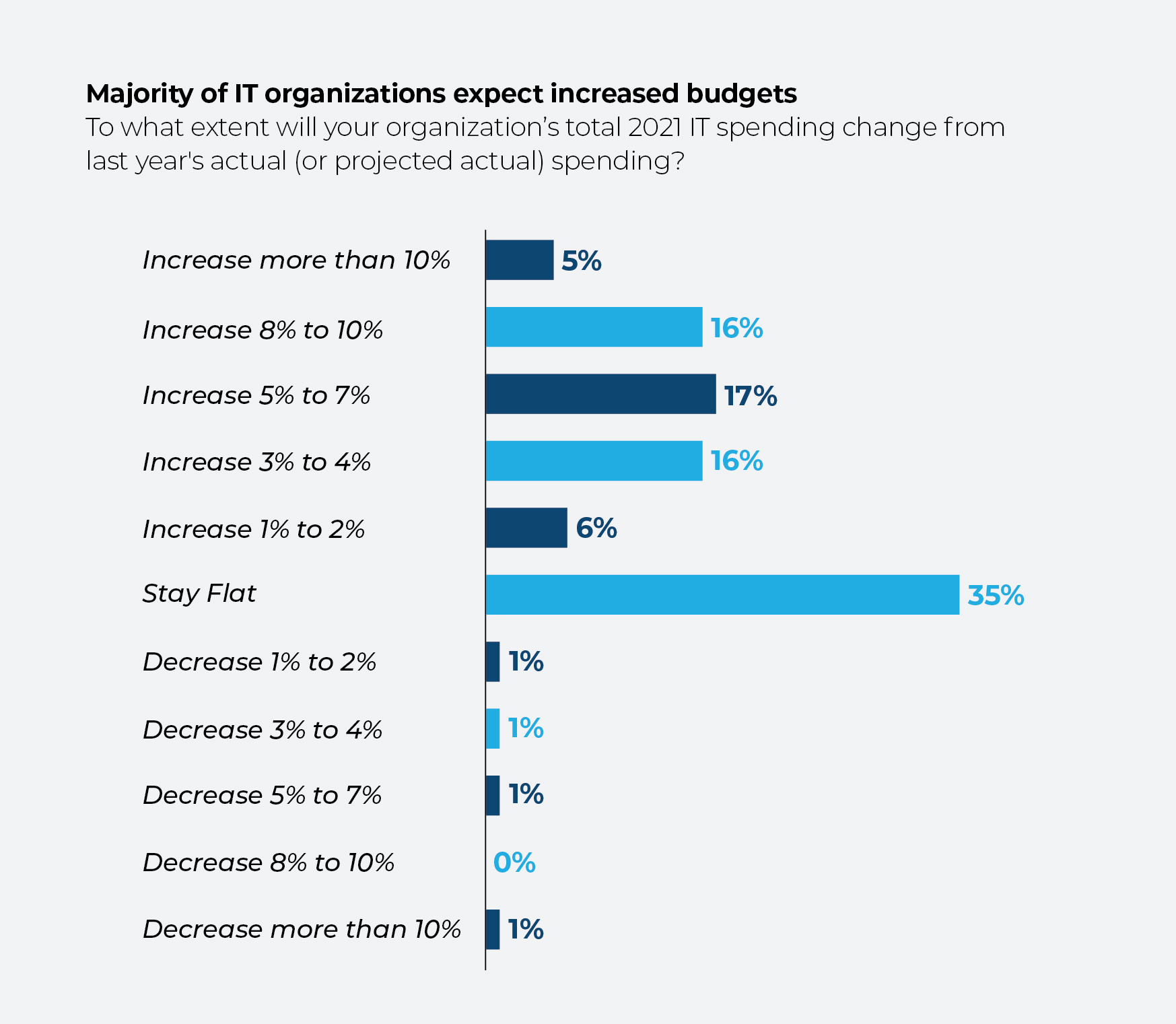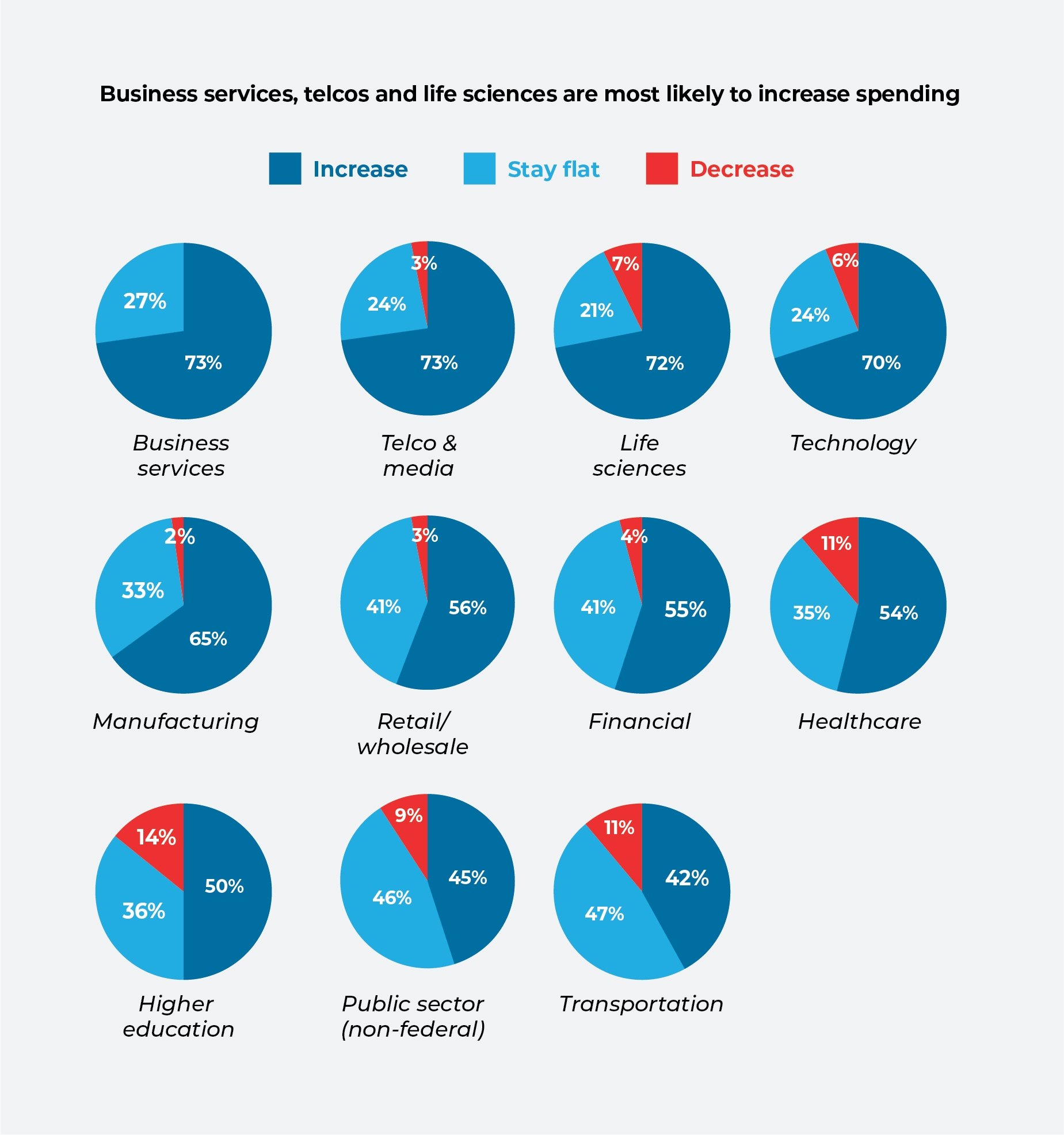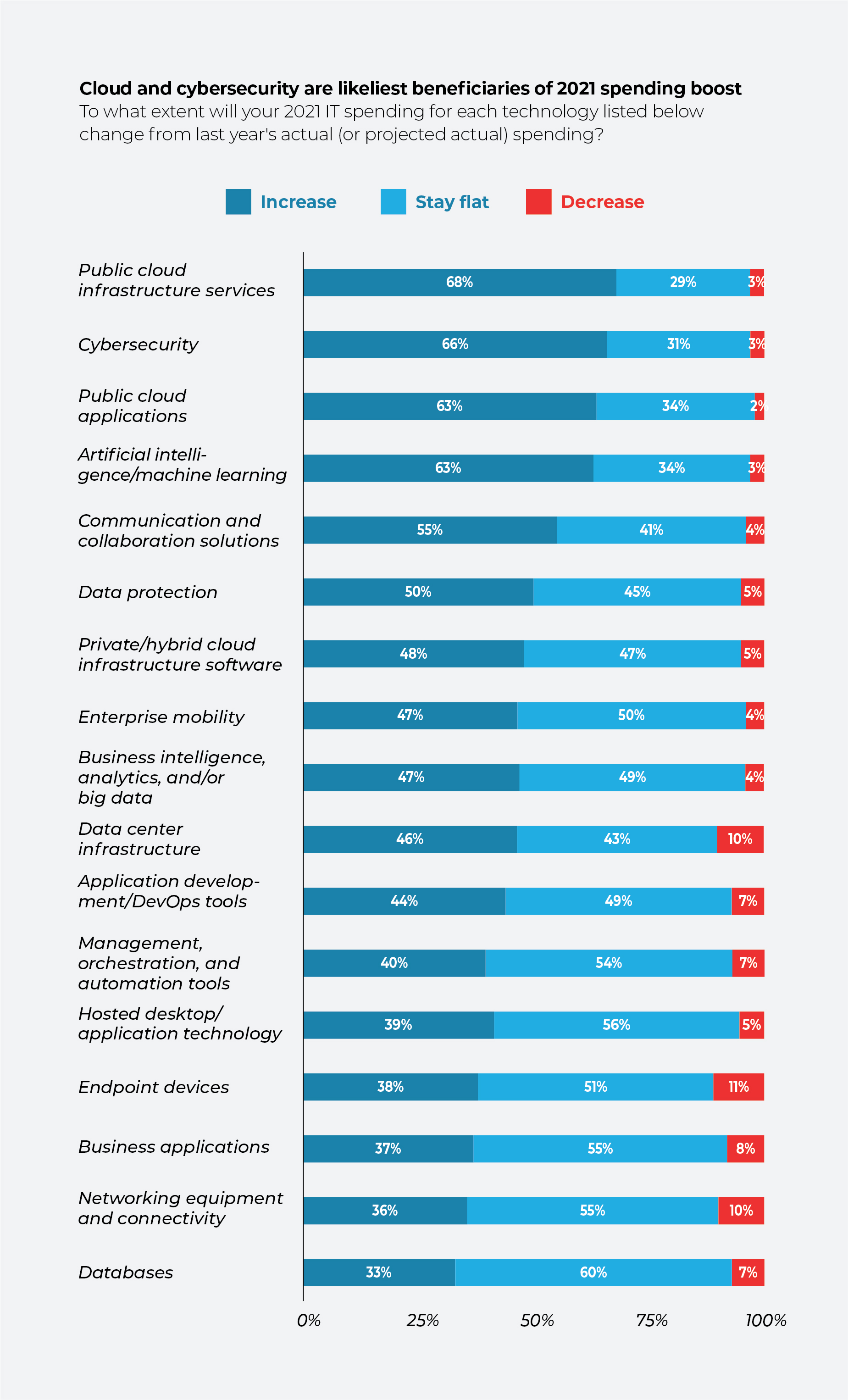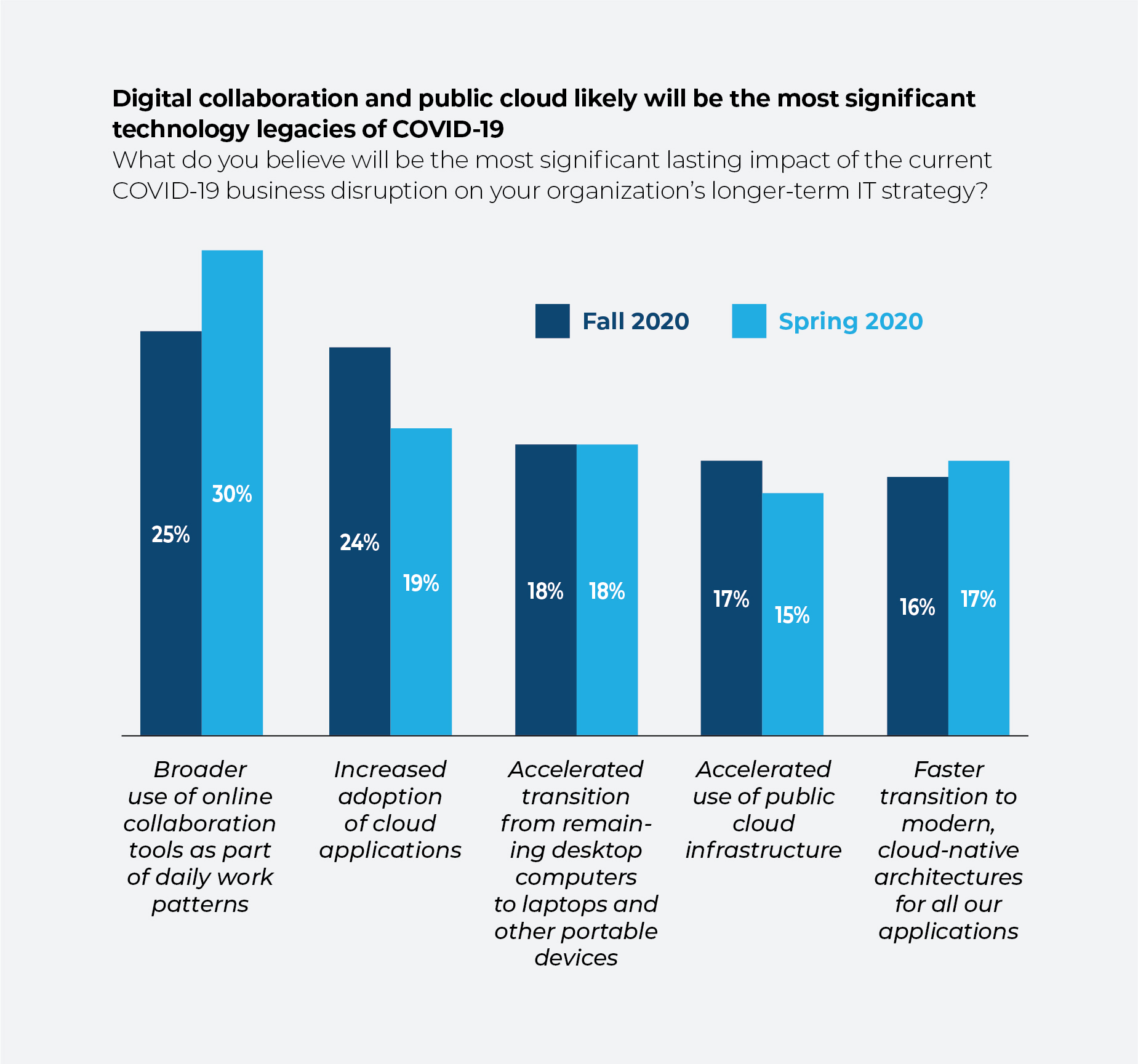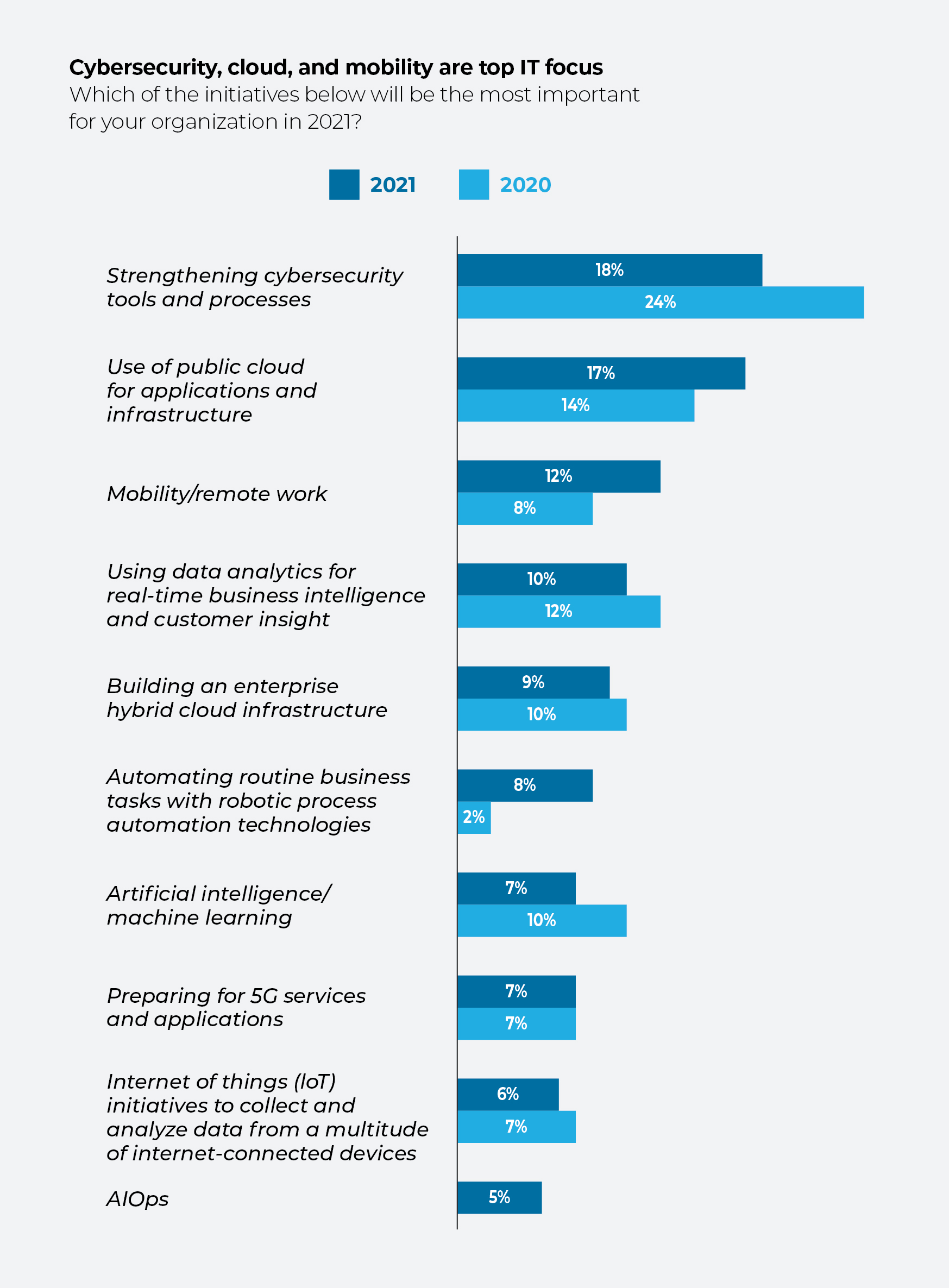5 Charts That Explain Where IT Spending Is Headed
Key takeaways from senior IT and business leaders
If 2020 saw the massive displacement of workers from offices to homes, and left IT departments scrambling to secure far-flung endpoint devices and optimize their newly distributed businesses, this year finds IT leaders ready for anything.
In fact, IT priorities and budgets are expected to lean into the new normal, with a majority of organizations increasing their spending to put in place long-term strategies that will give them a more flexible and resilient IT infrastructure. Among the top initiatives: strengthening cybersecurity as a business priority.
That’s according to a survey of 664 senior IT and business leaders across North America, Western Europe, and Australia conducted by Enterprise Strategy Group (ESG). The survey, which covered both midmarket (100 to 999 employees) and enterprise-class (1,000-plus) organizations in both the public and private sectors, found that six in 10 plan to increase spending for IT products and services.
Among the biggest recipients: public cloud services (for applications, infrastructure, and remote work capabilities) and cybersecurity, which survey respondents most commonly identified as their top IT initiative.
[Read also: 5 ways to stop lateral movements in cyberattacks]
Below are five charts that explain key takeaways.
- The IT budget boost
Overall, senior decision-makers are optimistic about 2021: Six in ten say they are increasing their spending from last year. Compare that to a little more than a third who say they are keeping budgets flat and only 4% planning cuts.
The overall average budget increase comes to 3.28%, with significant upticks seen for midmarket vs. enterprise-level firms (3.46% vs. 3.17%), those based in North America compared to Western Europe (3.55% vs. 2.67%), and those with mature digital transformation programs ahead of others in the initial planning stages or with no roadmap (4.33% vs. 2.05% vs. 0.15%).
- Business services, telcos, and life sciences lead the way
Across industries, the big spenders will probably be business services, telco and media outfits, and life sciences, where nearly three-quarters of respondents say budgets will likely rise. Industries impacted by lockdowns and mandatory social distancing requirements are less bullish on spending. In higher education, 50% say they expect to boost budgets, while 14% are braced for cuts. Transportation companies are most likely to flatten (47%) or shrink (11%) their budgets.
- Budget winners: cloud and cybersecurity
Anyone who has shared a cloud-based file in Dropbox or coauthored a report with Google Docs knows how cloud collaboration allows for increased participation and organization among remote workers. These tools also assist IT staffers forced to work from home, now manning virtual security help desks.
With more organizations moving business functions to the cloud, the need for heightened investment in cloud services and cybersecurity is crucial. Asked to identify technologies most likely to see budget gains, more than two-thirds of survey respondents (68%) say public cloud infrastructure services, followed closely by cybersecurity (66%) and public cloud applications (63%), which tied with artificial intelligence and machine learning.
- Virtual collaboration is here to stay
One of the most meaningful and lasting impacts on IT strategy will be the continued use of video, shared documents, and other online collaboration tools. But IT teams may have seen the peak of deployment already. In fact, while 30% of those surveyed noted increased online collaboration in spring 2020, as remote work ramped up, that figure had dipped (25%) by fall. That was most likely due to the cloud contribution to improved operations capabilities.
Still, digital collaboration tools came in as the No. 1 lasting impact on IT strategy, followed closely by increased adoption of cloud applications (24%).
- Cybersecurity is top—but agility remains key
Organizations rank cybersecurity enhancement and public cloud usage as the two top IT priorities for 2021, just as they did in 2020. But a closer look at shorter-term tech priorities reveals that new challenges and chances for innovation abound—if you’re ready and able to shift focus as needed.
Asked to rank the technology trend most important to their organization in 2020, only 2% of respondents cited automation of routine business tasks with robotic process technologies. Of nine top concerns for business leaders that year, automation ranked dead last. In 2021, those giving automation top priority quadrupled to 8%, making it sixth out of 10 key concerns.
Other shifting priorities include mobility and remote work capabilities—as a top concern, it jumped by half in the past year (from 8% to 12%)—while artificial intelligence and machine learning dropped nearly a third (from 10% to 7%).
